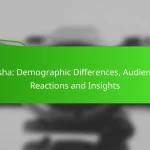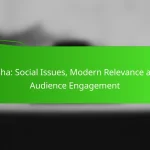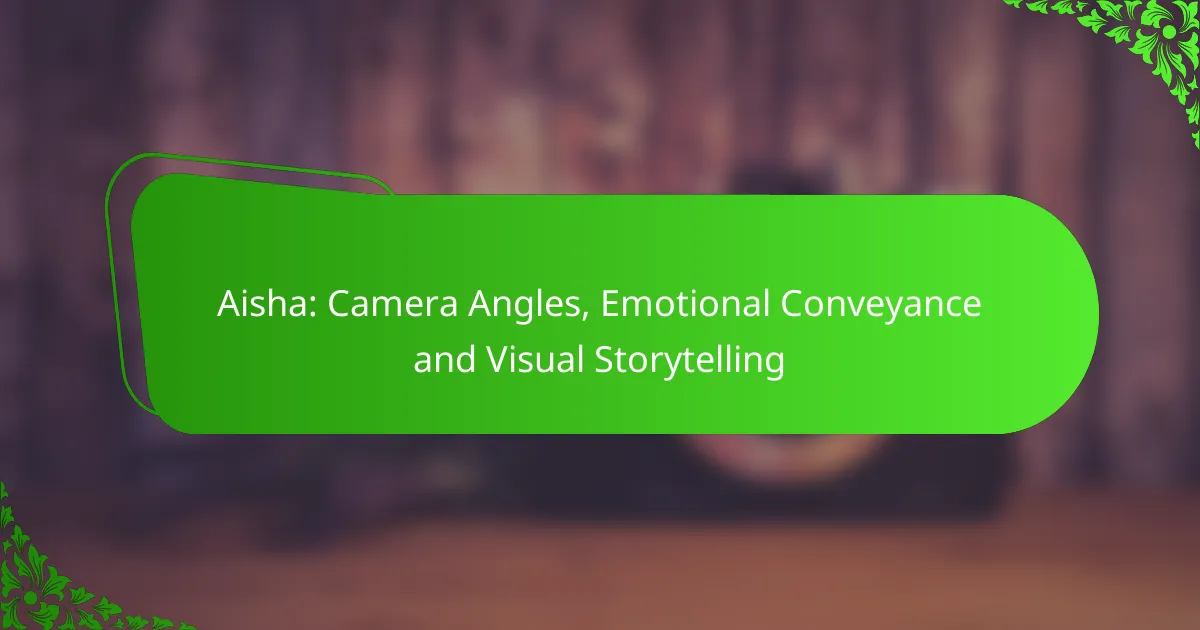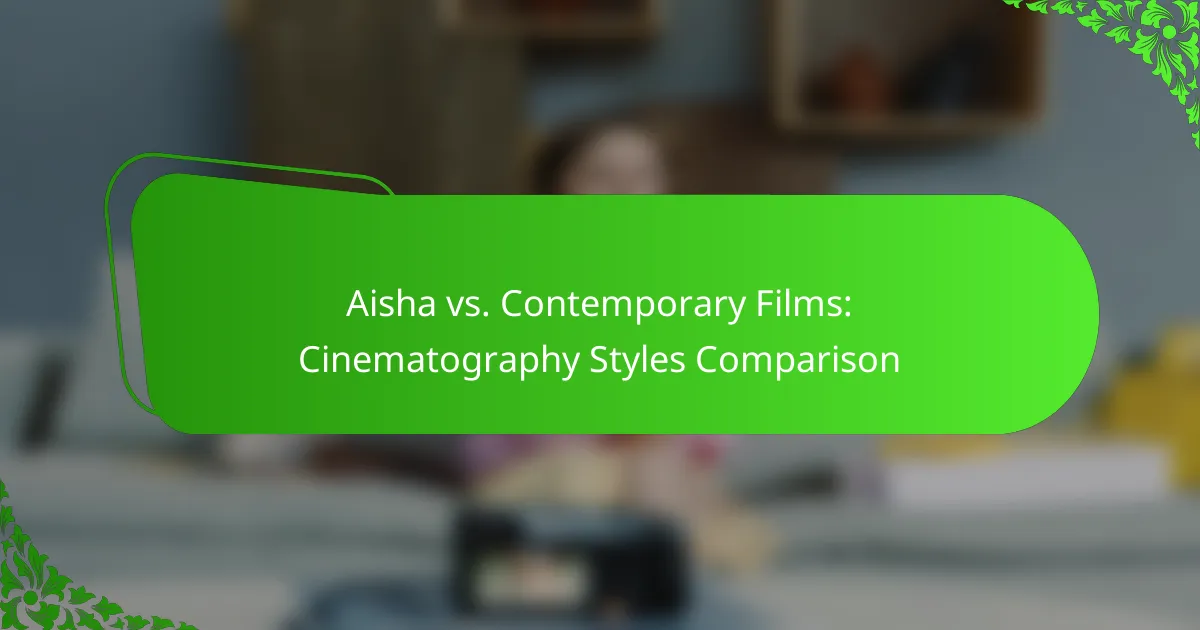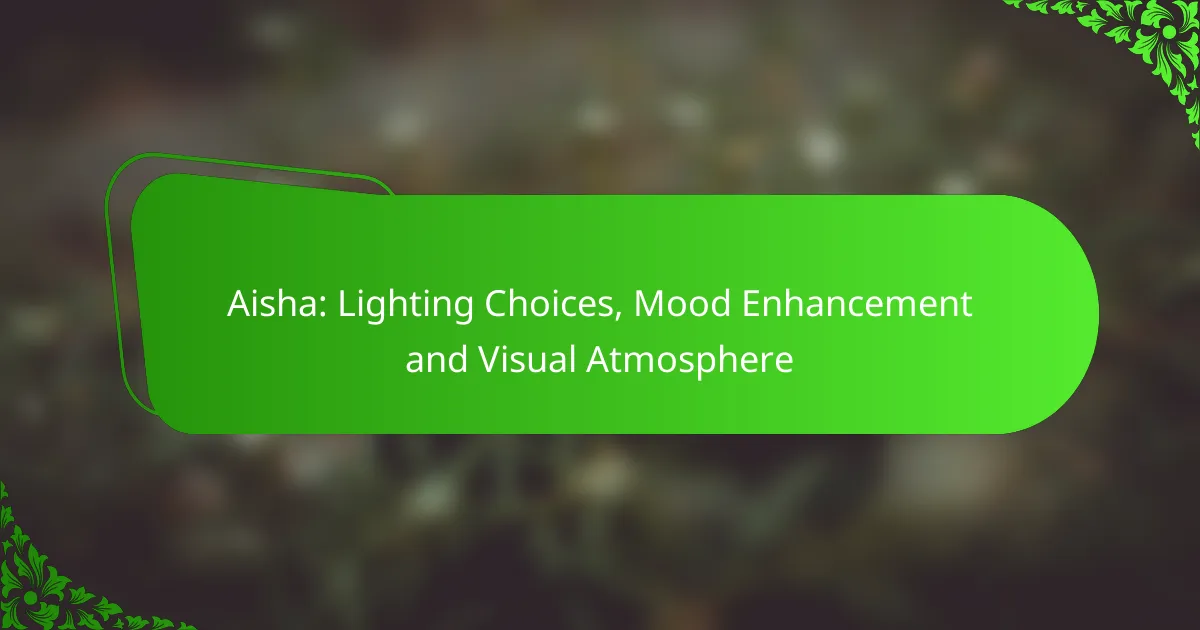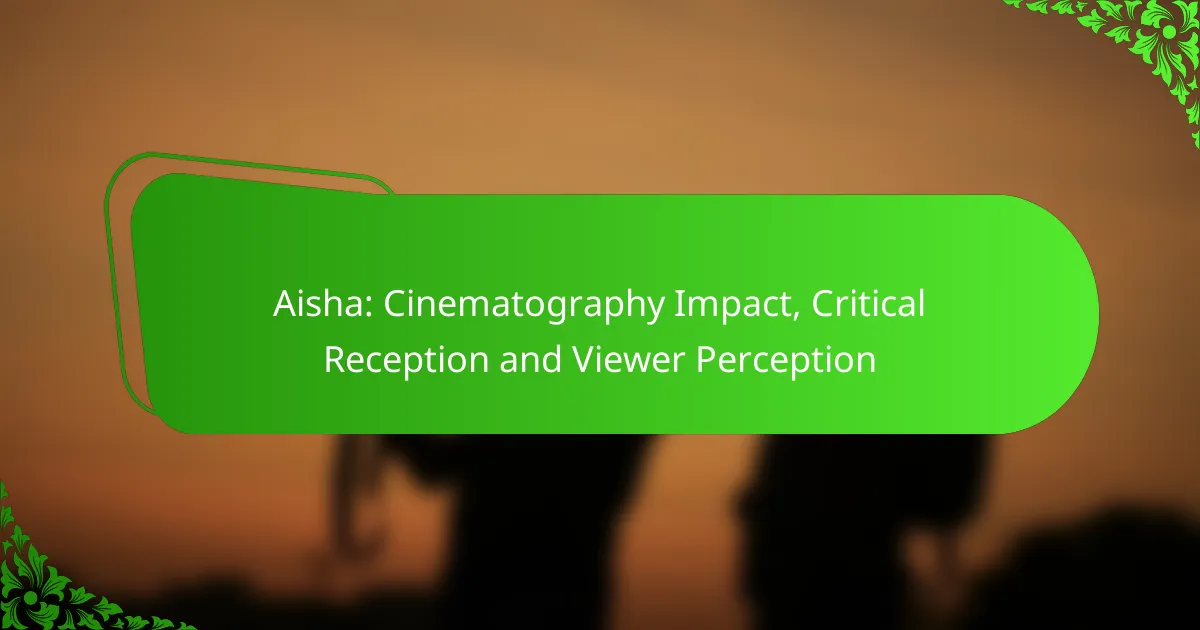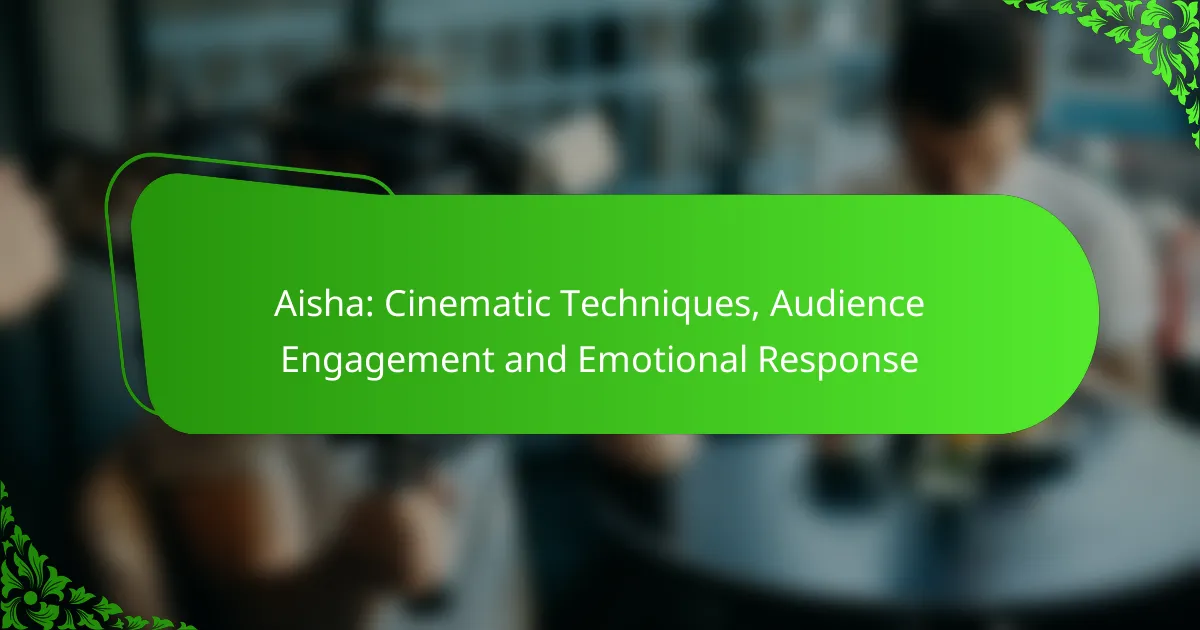In visual storytelling, camera angles are essential for conveying emotions and shaping audience perceptions. By strategically manipulating these angles, filmmakers can enhance narrative depth, emphasize character dynamics, and evoke specific feelings, ultimately guiding viewers through the story’s emotional landscape.
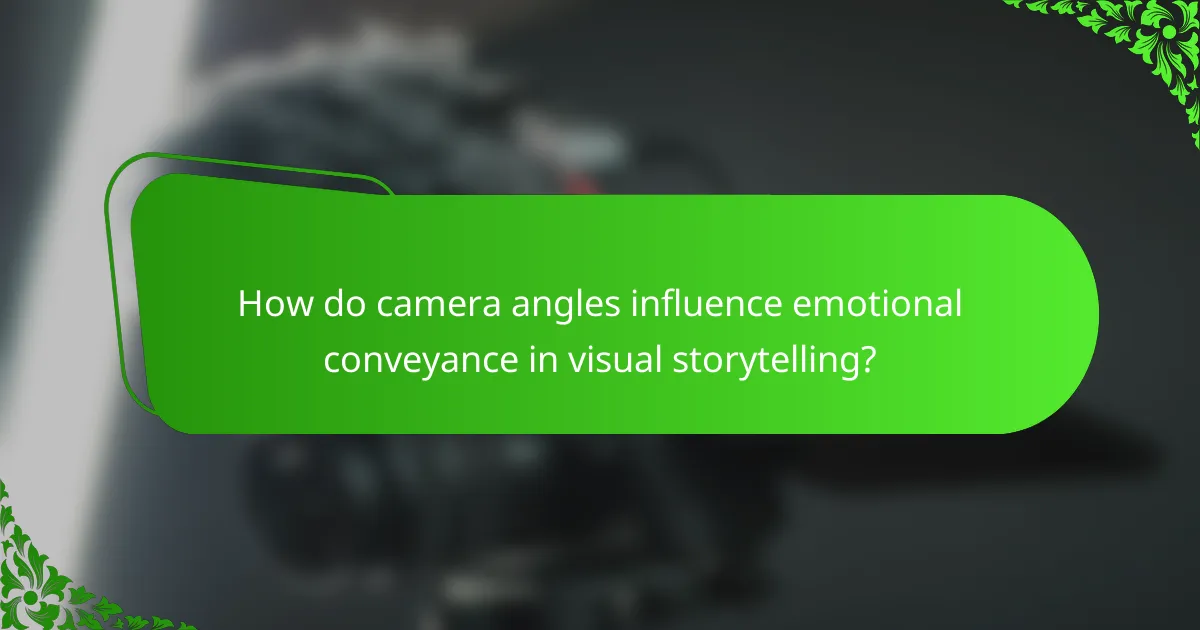
How do camera angles influence emotional conveyance in visual storytelling?
Camera angles play a crucial role in shaping the emotional impact of visual storytelling. By manipulating angles, filmmakers can evoke specific feelings and guide the audience’s perception of characters and scenes.
High-angle shots create vulnerability
High-angle shots, where the camera looks down on the subject, often convey a sense of vulnerability or weakness. This perspective can make characters appear smaller and less powerful, enhancing feelings of fear or helplessness.
For instance, in a dramatic scene where a character is facing a daunting challenge, a high-angle shot can emphasize their isolation and emotional turmoil. Use this technique sparingly to avoid overwhelming the audience with negativity.
Low-angle shots evoke power
Low-angle shots, taken from below the subject, tend to evoke feelings of power and dominance. This angle can make characters appear larger than life, instilling a sense of authority or confidence.
For example, a hero standing tall against a backdrop of chaos can be framed using a low-angle shot to highlight their strength. When employing this technique, consider the context to ensure it aligns with the character’s role in the story.
Close-ups enhance intimacy
Close-up shots focus tightly on a subject, allowing viewers to connect emotionally with characters. This angle captures subtle facial expressions and emotions, fostering a deeper understanding of their inner thoughts.
In romantic scenes, close-ups can intensify the emotional bond between characters, making moments feel more personal. Use close-ups strategically to draw attention to key emotional beats in the narrative.
Wide shots establish context
Wide shots provide a broader view of the scene, establishing context and setting for the audience. This angle helps to situate characters within their environment, conveying important narrative information.
For instance, a wide shot of a character in a vast landscape can emphasize their solitude or the scale of their journey. Incorporate wide shots to balance emotional intensity with a sense of place, ensuring the audience understands the stakes involved.
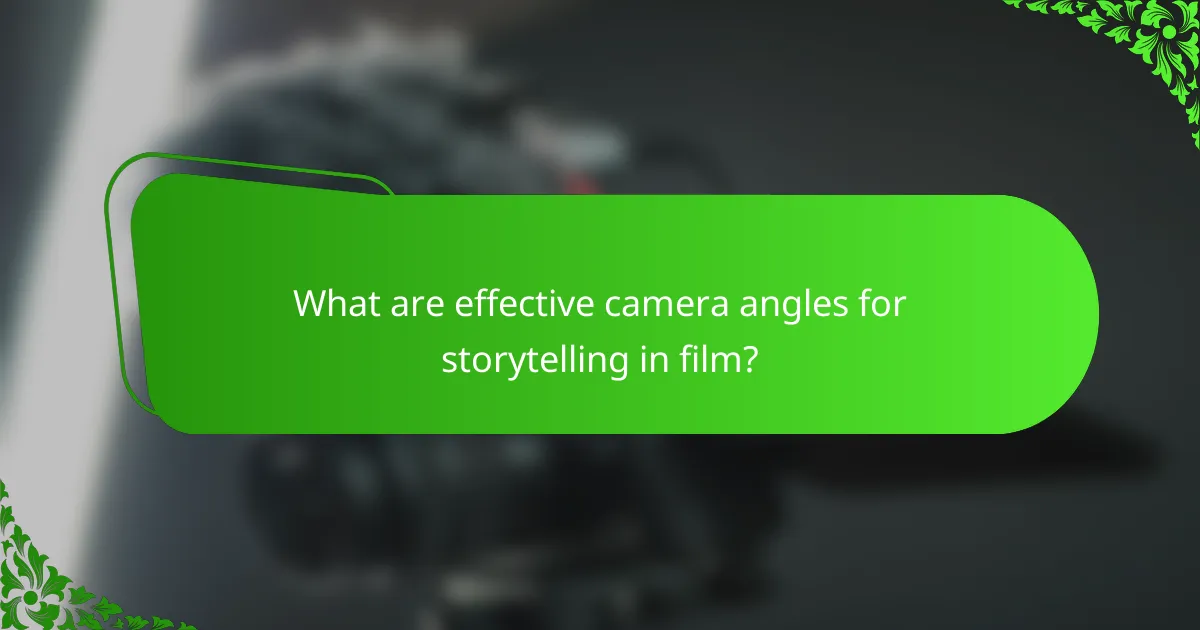
What are effective camera angles for storytelling in film?
Effective camera angles are crucial for storytelling in film as they shape the audience’s perception and emotional response. By strategically choosing angles, filmmakers can enhance narrative depth and highlight character dynamics.
Over-the-shoulder shots for perspective
Over-the-shoulder shots are commonly used to provide perspective, allowing viewers to see a character’s viewpoint during conversations. This angle fosters intimacy and connection, making the audience feel as if they are part of the dialogue.
When using over-the-shoulder shots, consider the placement of the camera to ensure it captures the subject’s reactions effectively. Positioning the camera at eye level can enhance the emotional weight of the scene.
Bird’s-eye view for dramatic effect
A bird’s-eye view shot presents a scene from directly above, creating a sense of scale and context. This angle can evoke feelings of vulnerability or isolation, particularly when depicting characters in a vast environment.
To utilize bird’s-eye views effectively, ensure that the composition highlights the action or emotional state of the characters. This perspective can be particularly striking in scenes of conflict or decision-making.
Two-shots for relationship dynamics
Two-shots feature two characters in the same frame, emphasizing their relationship and interactions. This angle is effective for showcasing emotional exchanges, tension, or camaraderie between characters.
When framing a two-shot, consider the distance between the characters. Closer proximity can suggest intimacy, while greater distance may indicate conflict or disconnect. Use this angle to reinforce the narrative’s emotional tone.

How can filmmakers use camera angles to enhance narrative?
Filmmakers can use camera angles to enhance narrative by visually conveying emotions, emphasizing actions, and building tension. The choice of angle can significantly influence how the audience perceives characters and events, making it a crucial tool in storytelling.
Angles to reflect character emotions
Camera angles can effectively reflect a character’s emotions by altering the viewer’s perspective. For instance, a low-angle shot can make a character appear powerful or dominant, while a high-angle shot can evoke feelings of vulnerability or weakness. Understanding these emotional cues allows filmmakers to guide audience reactions.
To enhance emotional conveyance, consider using close-ups to capture subtle facial expressions. This technique can create intimacy and allow viewers to connect deeply with characters. Experimenting with angles during key emotional moments can amplify the intended impact.
Dynamic angles for action sequences
Dynamic angles are essential in action sequences to create excitement and maintain viewer engagement. Utilizing tilted angles, known as Dutch angles, can convey chaos or disorientation, while rapid cuts between different angles can heighten the sense of urgency. These techniques keep the audience on the edge of their seats.
When planning action scenes, consider the pacing of the shots. Quick transitions between wide shots and close-ups can emphasize both the scale of the action and the characters’ reactions. This balance is crucial for delivering a thrilling experience without overwhelming the viewer.
Static angles for tension building
Static angles are effective for building tension by creating a sense of anticipation. Holding a shot on a character’s face or a significant object can draw the audience’s focus and heighten suspense. This technique encourages viewers to engage with the unfolding narrative, waiting for the next development.
To maximize the impact of static angles, use longer takes to allow tension to build gradually. Pairing these shots with minimal movement or sound can amplify the feeling of unease. Avoid excessive cuts during tense moments to maintain a strong connection with the audience’s emotions.
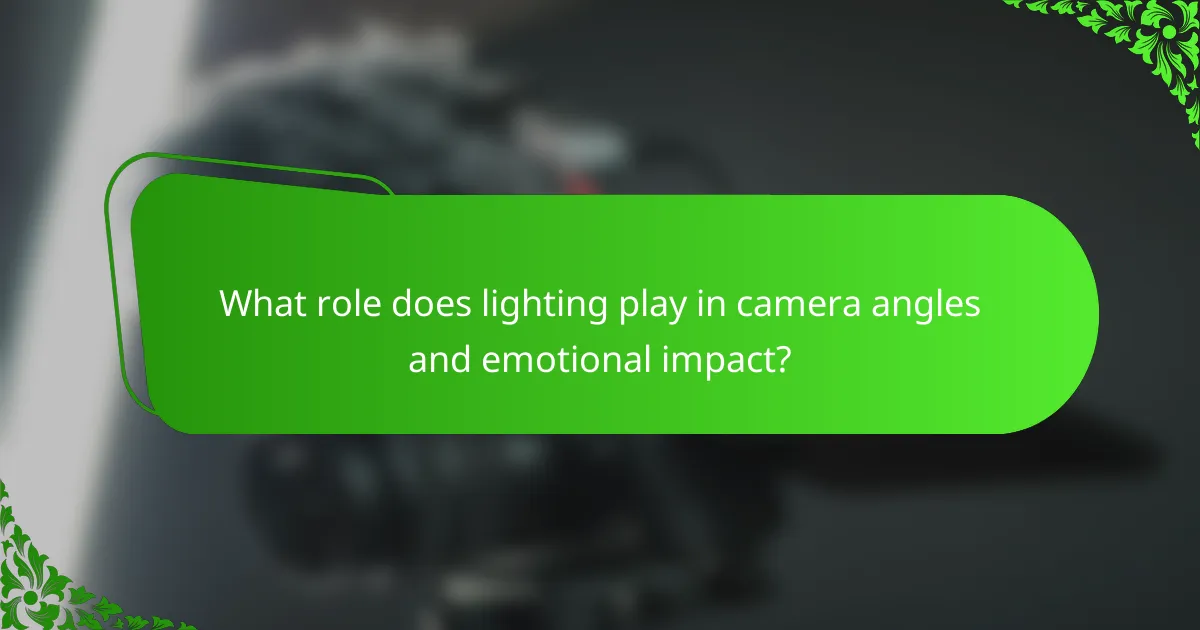
What role does lighting play in camera angles and emotional impact?
Lighting is crucial in shaping camera angles and enhancing emotional impact in visual storytelling. It influences how viewers perceive scenes, guiding their emotional responses and engagement with the narrative.
Lighting enhances mood
Lighting sets the overall mood of a scene, affecting how emotions are conveyed. For instance, bright, high-key lighting often creates a cheerful atmosphere, while low-key lighting can evoke feelings of tension or sadness. Filmmakers can manipulate lighting to align with the emotional tone they wish to express.
Consider using soft, diffused lighting for romantic scenes to create intimacy, while harsh, direct lighting can be effective for dramatic confrontations. Adjusting the intensity and direction of light can significantly alter the viewer’s emotional experience.
Shadows create suspense
Shadows play a vital role in building suspense and intrigue within a narrative. By strategically placing shadows, filmmakers can obscure details, prompting viewers to anticipate what might happen next. This technique heightens tension and keeps the audience engaged.
Utilizing shadows can also emphasize certain elements within a frame. For example, a character partially shrouded in shadow can suggest hidden motives or inner conflict, enhancing the storytelling by inviting viewers to read between the lines.
Color temperature affects perception
Color temperature in lighting influences how viewers perceive emotions and settings. Warm colors, like yellows and reds, often evoke feelings of warmth and comfort, while cool colors, such as blues and greens, can create a sense of calm or detachment. Understanding this can help in crafting the desired emotional response.
When selecting lighting for a scene, consider the emotional context. For a nostalgic flashback, warm tones can enhance the sense of longing, while cooler tones might be suitable for a more clinical or detached scene. Adjusting color temperature can be a powerful tool in visual storytelling.

What are the best practices for choosing camera angles in visual storytelling?
Choosing the right camera angles is crucial for effective visual storytelling as it enhances the narrative and emotional depth. Best practices involve aligning angles with character development, considering audience reactions, and being open to unconventional perspectives.
Align angles with character arcs
Camera angles should reflect the emotional and narrative journey of characters. For instance, low angles can portray a character’s power or confidence, while high angles may suggest vulnerability or defeat. By matching the angle to the character’s arc, filmmakers can deepen audience engagement.
Consider using close-ups during pivotal moments to capture subtle emotional shifts, or wide shots to emphasize isolation or connection. This alignment helps viewers intuitively understand character motivations and transformations.
Consider audience emotional responses
Understanding how different angles affect audience emotions is essential. For example, a tilted angle can create unease or tension, while straight-on shots often convey honesty and clarity. Tailoring angles to evoke specific feelings can enhance the storytelling experience.
Test your choices with focus groups or screenings to gauge reactions. This feedback can inform adjustments, ensuring that the intended emotional impact resonates with viewers.
Experiment with unconventional angles
Unconventional camera angles can provide fresh perspectives and enhance storytelling. Techniques such as bird’s-eye views or extreme close-ups can surprise audiences and draw attention to key elements. These angles can also symbolize themes or character states.
While experimenting, balance creativity with clarity. Ensure that the angle serves the story rather than distracts from it. Documenting which unconventional angles work best in different contexts can help refine future projects.


